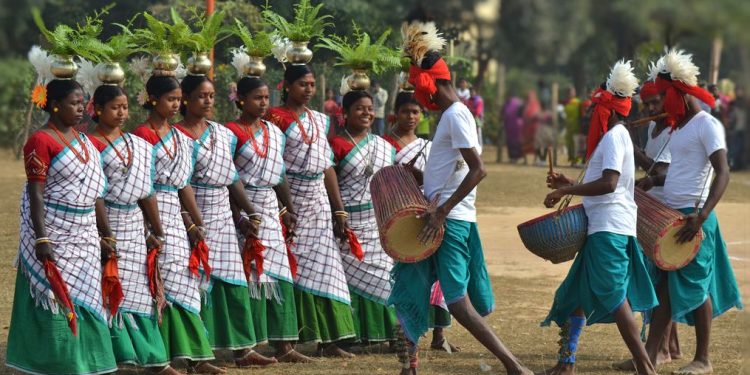BHUBANESWAR: Bursting of crackers, lighting of diyas and eating delicious sweets usually characterises the celebrations of Diwali. However, some communities celebrate Diwaly differently than others.
The Santal and Kudmi tribes of Mayurbhanj district celebrate the festival in a unique manner. Orissa Post interacted with a few members of the tribes to delve deeper into the subject.
Famous sand artist Dasrath Mohanta, who is also a resident of Baunsadia in Thakurmundia village said, “Our celebration of Diwali starts with our people applying oil on the horns of bullocks and cows. We also wash their legs and apply tilak on their forehead following which, the head priest of our village performs puja for these animals in cow sheds.”
Upendra Mohanta, a resident of Thakurmunda village said, “A bullock dance known as Goru Bhilka is organised in our village. Untamed bullocks play with a big ball made of straw in this event.”
Umamani Mohanta, a resident of Rasamatala village, said, “In our Kudmi community, we sing songs with the theme of environment when the cows come home after grazing. We also perform a Chanchar dance to celebrate our love for the environment and Mother Nature. The room in which tribes enter and sing is called as Jaaga Geet. We do celebrate Diwali by lighting up diya as well.”

Thakurdas Mohanta, the head priest of Baunsadiha village, said, “On the second day of Diwali, our tribe performs Giri Govardhan Puja, where all tools used in farming are cleaned up and decorated with rice rangoli. New patches of paddy are brought from the cultivated lands and tied up on the horns of cows and bullocks as a head gear. The first puja is then performed before a Tulsi Chaura and the next one is performed inside the house in memories of ancestors.”
“Three heaps of cow dung is placed on the floor. A marigold flower is placed above each heap. The bullocks walk over the cow dung. In the evening, a Jagar Diya, which keeps on burning for the whole night, is lighted. People keep a check on it and makes sure it is lighted up properly. On the third day, Bandana Parba is celebrated. Some members of the community wear new clothes and perform a group dance at every household. The group known as Dhinguan are properly fed at every home after the dance. During these three days, a special pancake is prepared with mutton and rice flakes and is known as Letto.”

Interestingly, the tribes of Kudumi play nagra, madal, jhumka and dholki among other musical instruments during these three days of the festival. The singer sings in a question answer pattern which richly entertains the listeners. It’s about time that we spare some time to learn something about these tribal cultures and their unique way of celebrating festivals.
Chaitali Shome,OP







































